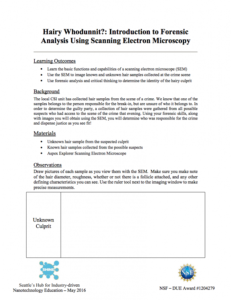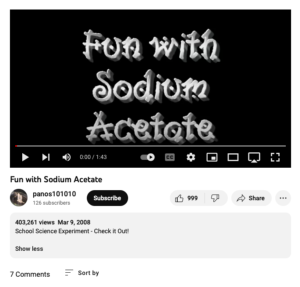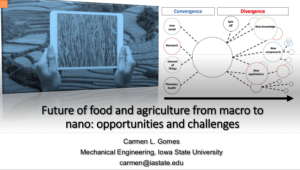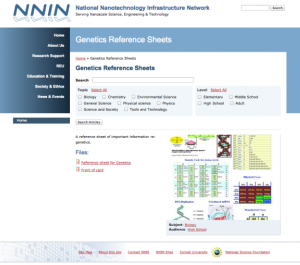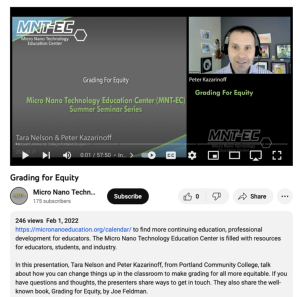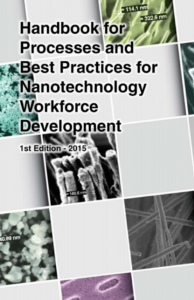Browse Resources
Resources | |
|---|---|
This 3-page activity was created by SHINE: Seattle's Hub for Industry-driven Nanotechnology Education and covers forensic analysis using scanning electron microscopy. In this activity students will learn basic functions and capabilities of a scanning electron microscope (SEM), use a SEM to image ...
This article from SPIE describes how dielectric breakdown and wet etching may provide a method of fabricating 3D nano- and microscale channels inside transparent dielectric materials. The article includes several graphics which help to illustrate the concept.
Material from this website was produced as part of a 4-part ten hour course designed to introduce users to the basics of nanotechnology. This course includes four sections and additional Nanotechnology essays. Each section of the course may be downloaded as a PowerPoint or PDF, essays may be...
This short YouTube video, created as part of a school science project, demonstrates how to make a supersaturated solution using sodium acetate. It also illustrates an exothermic reaction or the heat of crystallization shown when the solution is touched.
This webinar is provided by the Nanotechnology Applications and Career Knowledge Support Center (NACK Center) and is presented by Dr. Carmen L. Gomes, a mechanical engineer from Iowa State University. The presentation highlights the need for convergence between several domains, to address the...
This 11-page article, published by Nature Communications, discusses probabilistic neural networks (PNNs) that can improve computing power through energy scaling, size scaling, and complexity scaling. "In short, 2D materials facilitate aggressive size scaling, analog Gaussian synapses offer energy...
This lab, presented by the National Nanotechnology Infrastructure Network, covers the concept of material properties. Students will create a microfluidic device to show "the importance of channel design in biotechnology and nanotechnology and the methods used to study the behavior of fluids as they...
This reference sheet, presented by the National Nanotechnology Infrastructure Network provides a valuable information on genetics and cell division for high school students studying these topics. The sheet includes diagrams of DNA molecules, information on the genetic code for amino acids, both a...
This webinar was presented by Tara Nelson and Peter Kazarinoff from Portland Community College and covers grading for equity in the classroom. During the webinar, Nelson and Kazarinoff discuss how teachers can change things up to make grading for all more equitable. The presenters talk about the...
This 86-page handbook is provided by the Nanotechnology Applications and Career Knowledge Support Center (NACK Center) and is intended to familiarize nanotechnology program personnel with practices of other nanotechnology programs. This handbook "is a compilation of outreach and recruitment...
| |
| ← Previous | Next → |
